Helping Orange County’s Seniors: The Hidden Hunger Crisis Among OC’s Aging Population

As part of Hunger Action Month, Second Harvest Food Bank is highlighting certain groups within the Orange County community that are regularly experiencing food insecurity. For Senior Hunger Awareness Week (September 16-20), Second Harvest CEO Claudia Bonilla Keller sat down with partner organization Meals on Wheels OC’s President and CEO Holly Hagler for a discussion on senior hunger here in Orange County and what their two organizations are doing to help assist this growing vulnerable population.
MODERATOR: Welcome to both of you. Holly, could you please briefly describe the services offered by Meals on Wheels Orange County?
HOLLY HAGLER (HH): Gladly. We nourish the wellness, purpose and dignity of older adults in the community through a range of nutrition and supportive services. We make and deliver meals to hundreds of home-bound older adults a day and offer hot lunches and socialization through collaborations with 23 senior centers in OC. Additionally, we offer medically-tailored meals, enhanced care management and adult day health care in coordination with health plans and supportive housing communities. And we are proud to partner with other nonprofits to make meals for their programs, including with Second Harvest Food Bank for their Kids Cafe program.
MODERATOR: How do both Meals on Wheels OC and Second Harvest support Orange County’s seniors?
HH: The prepared meals that Meals on Wheels OC provides are designed by a registered dietician and formulated to deliver all the nutrients that older adults need for a given meal, and we make them in our 22,000-square-foot community kitchen in Anaheim. We also provide social companionship with those meals, whether it’s in senior centers where participants share a meal in the company of others or through friendly volunteers who deliver meals to homebound elders.
CLAUDIA BONILLA KELLER (CBK): That’s an interesting component as well because Second Harvest’s senior programs are Park-It Market, which is the mobile market that goes to senior centers, and our Senior Grocery program. These programs also encourage social interaction because they happen at a certain time and folks come out of their homes and outside to interact with the program staff and other participants. So whether it’s coming to eat a meal, in the case of Meals on Wheels, or to get groceries from Second Harvest, both are bringing folks together for social interaction, and they become opportunities for social moments in addition to moments of being able to provide nourishment. Oftentimes our programs are the only opportunities seniors may have for social interaction on any given day.
HH: And that socialization is so important because isolation has a tremendous adverse impact on people. Studies have shown that the effect of isolation on one’s health is the equivalent of smoking 15 cigarettes a day. Our programs jointly provide the social interaction that seniors need.
CBK: Second Harvest partners with affordable housing communities, senior centers, low-income senior apartment complexes to provide regular grocery opportunities. The seniors all know when Park-It Market is going to roll up, or the farmer’s market style grocery distribution is going to be set up. It’s really important to us that [our groceries are] choice-based, that it’s not a bunch of boxes that have the same thing, because not every senior eats the same way, not every senior has the same dietary needs or health needs, or even food preferences. They’re able to choose what they want and what they’re picking.
HH: Yes, from a dignity perspective, choice is so important. The way we at Meals on Wheels OC provides choice is through different menus, such as Hispanic, Asian, vegetarian, and lactose-free menus, in addition to our traditional multiculture menu. Homebound older adults can select the types of meals they receive via home-delivery.
MODERATOR: Can you talk a little bit about the current state of food insecurity here in Orange County and how seniors specifically are being affected by this? How do seniors differ in their needs than other members of the community?
CBK: The current estimate from the USDA and from Feeding America is that about 10% of our population here in Orange County, or about 330,000 individuals, are experiencing food insecurity. This is about 1 in 10 adults, and about 1 in 8 children. I think the more alarming thing is that while the rate of food insecurity in Orange County is not greater than the rate of food insecurity in the state of California, the rate of growth of food insecurity in Orange County is growing faster than the rate of growth in the state. It’s scary, but it makes sense because according to the Urban Institute, 43% of OC households are “shelter burdened,” meaning they’re spending a disproportionate amount of their income on rent or mortgage. If you’re using your financial resources to stay in your home, you have less resources to buy food. It’s a hidden crisis, you’re not going to see it. This is unlike an often-visible crisis like homelessness.
HH: The senior population is the only demographic that is growing in Orange County. Nearly one in three low-income seniors in OC experiences food insecurity. What you don’t see are even more seniors who struggle to pay the rent, who are not able to pay their utility bills, or those who skip meds or meals. 28% of older adults in the County do not have enough resources to cover their basic needs. By the time they receive services from Second Harvest or Meals on Wheels OC, they’re already making sacrifices with the resources that keep them healthy and the ability to remain independent and living in their homes. That’s the big issue. If they’re skipping meds, we don’t want to have them choose between keeping their lights on or taking their medications or eating.
CBK: About a third of the people in the County that are food insecure are low-income seniors – which is why we have specialized programs for them. They are a big part of the food and nutritionally insecure population. On top of being house-burdened and food insecure, they’re older and have health issues, and are often balancing taking medications. As Holly said – we don’t know if there’s more to that story. We don’t know if there’s elder abuse, or if they’re taking care of their grandchildren, if there are more dependents in the picture than we know about. It’s a very layered, nuanced understanding of what is going on with people who are over 65.
MODERATOR: To help address the rising food insecurity here in Orange County, the OC Hunger Alliance expanded from three to eight members this past summer. Can you talk a little about the OC Hunger Alliance, and why Meals on Wheels OC joined as a partner?
CBK: The OC Hunger Alliance started as a partnership between the two food banks in Orange County, Second Harvest Food Bank of Orange County and Orange County Food Bank, and Abound Food Care, right around the time of the pandemic. It made sense for hunger relief organizations to work together toward a common mission. Very quickly we realized that there are more than three hunger relief organizations here in OC, and some are more specialized in what they do and that have different approaches, but we are all trying to better feed people in Orange County that need food. The invitation to other organizations seemed natural and this was the time to do it, and of course Meals on Wheels OC was at the top of the list when we thought of who to extend the invitation to. Not only have they been long term partners of Second Harvest, but they have been in the community a long time and they understand a certain facet of hunger that no other partner in the OC Hunger Alliance does.
HH: Meals on Wheels OC collaborates with numerous groups to address hunger and senior issues. We’re thrilled to be a part of the OC Hunger Alliance to continue to advance solutions that reduce food insecurity and can increase nutritional health across all ages. We are delighted to engage with the full spectrum of organizations addressing hunger in Orange County.
CBK: No one organization is going to figure it out. It has to be a movement and a systems solution.
For more information on Meals on Wheels Orange County, visit www.mealsonwheelsoc.org. Their elderly nutrition services are funded in part through a grant from the California Department of Aging and administered by the Orange County Office on Aging.
For more information on the OC Hunger Alliance, visit www.ochungeralliance.org.


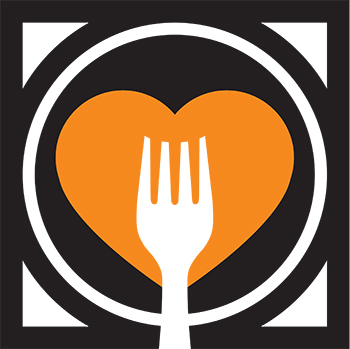
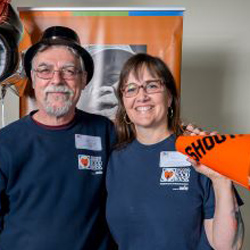 Jill Wilson decided to volunteer with Second Harvest in 2008 when she was in between jobs and looking for a way to apply her talents that could benefit the community. She arrived one day at Second Harvest’s former distribution center in Orange, ready to serve, and felt immediately connected to the mission.
Jill Wilson decided to volunteer with Second Harvest in 2008 when she was in between jobs and looking for a way to apply her talents that could benefit the community. She arrived one day at Second Harvest’s former distribution center in Orange, ready to serve, and felt immediately connected to the mission.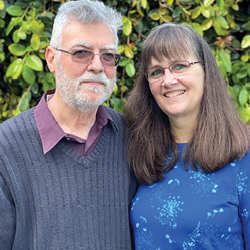 Like Jill and Ian, other friends of the food bank may be looking for ways to connect meaningfully with Second Harvest to help those experiencing hunger in Orange County for years to come. One simple way to make a significant impact, while achieving peace of mind, is by creating a will or revocable living trust with our partner, FreeWill.
Like Jill and Ian, other friends of the food bank may be looking for ways to connect meaningfully with Second Harvest to help those experiencing hunger in Orange County for years to come. One simple way to make a significant impact, while achieving peace of mind, is by creating a will or revocable living trust with our partner, FreeWill.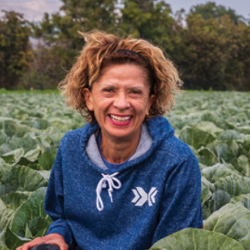 March is National Nutrition Month, an annual awareness campaign that encourages us to learn about nutrition, develop healthy eating habits and discover the fun of being physically active. At Second Harvest Food Bank of Orange County, we strive to provide everyone in Orange County with the nutrition they need to grow and excel in life.
March is National Nutrition Month, an annual awareness campaign that encourages us to learn about nutrition, develop healthy eating habits and discover the fun of being physically active. At Second Harvest Food Bank of Orange County, we strive to provide everyone in Orange County with the nutrition they need to grow and excel in life. Last spring, here at Second Harvest we completely revamped our focus to proactively purchase fresh nutrition for those in need, ensuring a steady pipeline of protein, dairy, eggs, fruits and vegetables to our approximately 300 partner and program sites. As a next step, we recently unveiled our new, 6,200-square-foot cold storage facility and two additional cold docks that establish a “cold chain” at our distribution center in Irvine. This gives us a total of 14,550 square feet of cold storage, which greatly enhances our ability to source and distribute more nutritious food.
Last spring, here at Second Harvest we completely revamped our focus to proactively purchase fresh nutrition for those in need, ensuring a steady pipeline of protein, dairy, eggs, fruits and vegetables to our approximately 300 partner and program sites. As a next step, we recently unveiled our new, 6,200-square-foot cold storage facility and two additional cold docks that establish a “cold chain” at our distribution center in Irvine. This gives us a total of 14,550 square feet of cold storage, which greatly enhances our ability to source and distribute more nutritious food.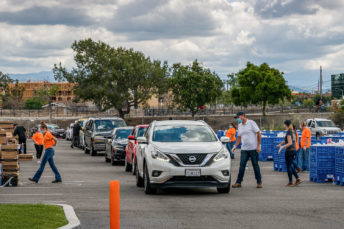 Second Harvest continues to fight increasing food insecurity through our Pop-Up Drive Thru food distributions with the help of many amazing volunteers and it is no surprise that many of them are mothers. Jacqueline is one such volunteer and I wanted to learn more of her story.
Second Harvest continues to fight increasing food insecurity through our Pop-Up Drive Thru food distributions with the help of many amazing volunteers and it is no surprise that many of them are mothers. Jacqueline is one such volunteer and I wanted to learn more of her story.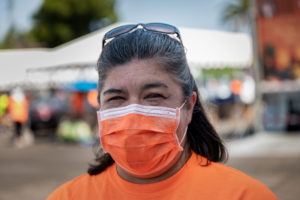 here to volunteer representing other mothers…to give back to the community, to be a role model to my children. As a mother, as a woman, as a friend, as a wife…you have so many hats you have to put on and one of them is giving. When I go home my daughter asks me, “Mom what did you do today?” And I say, “I got to give back to people, people that really don’t have as much as we do.” Hopefully she sees me doing this and then as she gets older, she’ll want to give back just the same way.”
here to volunteer representing other mothers…to give back to the community, to be a role model to my children. As a mother, as a woman, as a friend, as a wife…you have so many hats you have to put on and one of them is giving. When I go home my daughter asks me, “Mom what did you do today?” And I say, “I got to give back to people, people that really don’t have as much as we do.” Hopefully she sees me doing this and then as she gets older, she’ll want to give back just the same way.”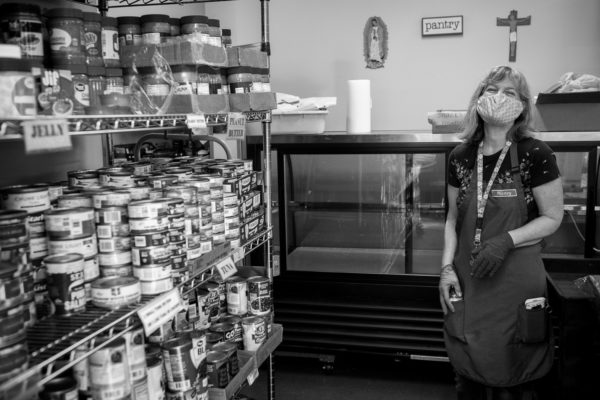 Pantry. Their style traditionally has always been very welcoming and focused on building relationships with those they serve. They would put out coffee and pastries and spend time talking with the families who would come early just to socialize.
Pantry. Their style traditionally has always been very welcoming and focused on building relationships with those they serve. They would put out coffee and pastries and spend time talking with the families who would come early just to socialize. One of Nancy’s key volunteers, Mary Kaye, also shared insights. Mary Kaye is an emergency room doctor who has been spending much of her spare time serving at the Saint Timothy pantry. She began volunteering pre-COVID by taking blood pressures on pantry days and translating for Spanish-speaking clients.. All the changes have her missing conversations and connecting with the families they serve.
One of Nancy’s key volunteers, Mary Kaye, also shared insights. Mary Kaye is an emergency room doctor who has been spending much of her spare time serving at the Saint Timothy pantry. She began volunteering pre-COVID by taking blood pressures on pantry days and translating for Spanish-speaking clients.. All the changes have her missing conversations and connecting with the families they serve.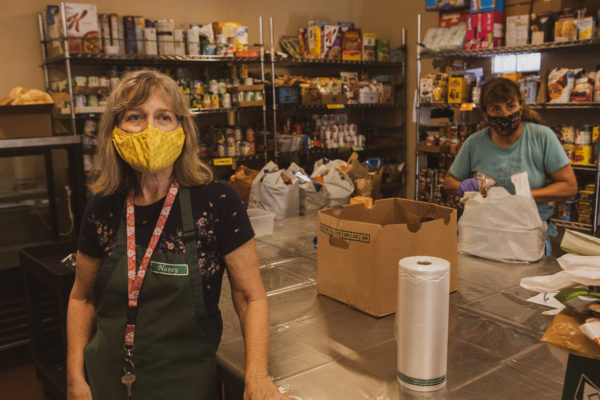 can take your blood pressure soon,” and encouraging them.”
can take your blood pressure soon,” and encouraging them.”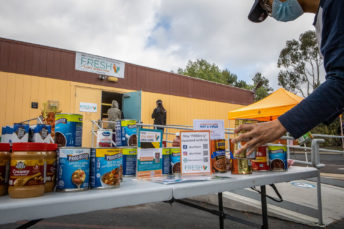 Whatever the situation that keeps students on campus and struggling to feed themselves, the Fresh Basic Needs Hub at UCI remains open to serve them, supported by food from Second Harvest. Student hunger is a serious challenge, made even worse by the pandemic, but Fresh, as it’s called, has the mission to provide for the basic needs of UCI students, allowing them to focus on academics.
Whatever the situation that keeps students on campus and struggling to feed themselves, the Fresh Basic Needs Hub at UCI remains open to serve them, supported by food from Second Harvest. Student hunger is a serious challenge, made even worse by the pandemic, but Fresh, as it’s called, has the mission to provide for the basic needs of UCI students, allowing them to focus on academics.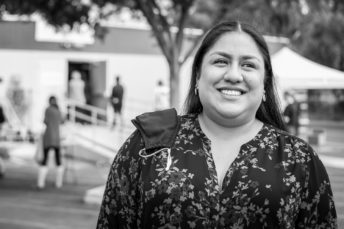
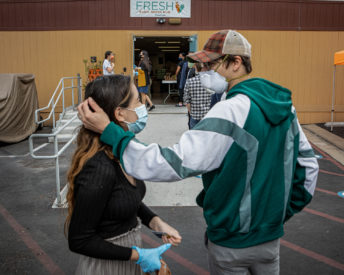 Last week did not feel hopeful. Seeing the injustice of the past few days makes me cringe. It causes me to grieve when I see people treated unfairly or worse. But I’m choosing to move forward with hope. How can I have hope this week? Because I know Andrea and I see how she treats people who sometimes feel trapped. The team at Fresh, and all the other college pantries in Orange County serve as a lifeline for their students, providing for basic needs and offering a dignified experience for everyone who comes to them for help. Their service is a beacon of hope in the darkness.
Last week did not feel hopeful. Seeing the injustice of the past few days makes me cringe. It causes me to grieve when I see people treated unfairly or worse. But I’m choosing to move forward with hope. How can I have hope this week? Because I know Andrea and I see how she treats people who sometimes feel trapped. The team at Fresh, and all the other college pantries in Orange County serve as a lifeline for their students, providing for basic needs and offering a dignified experience for everyone who comes to them for help. Their service is a beacon of hope in the darkness.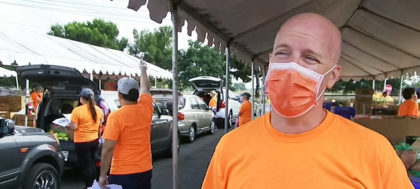
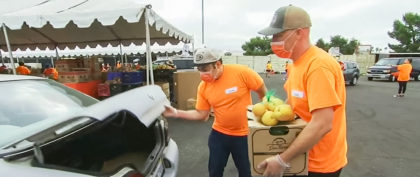 redirected those emotions toward survival and humility. While it was a very difficult decision, Stephen and Kristina decided that in order to make it through this crisis, they would need to receive assistance the first time in their lives. This is what it means to be newly vulnerable.
redirected those emotions toward survival and humility. While it was a very difficult decision, Stephen and Kristina decided that in order to make it through this crisis, they would need to receive assistance the first time in their lives. This is what it means to be newly vulnerable.